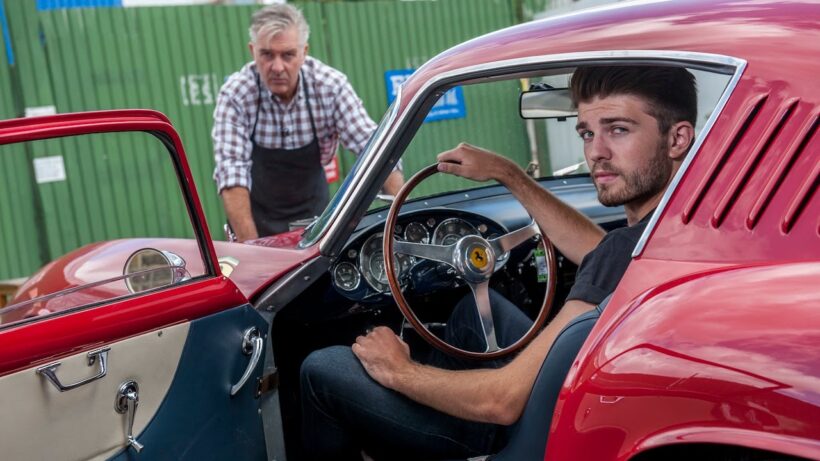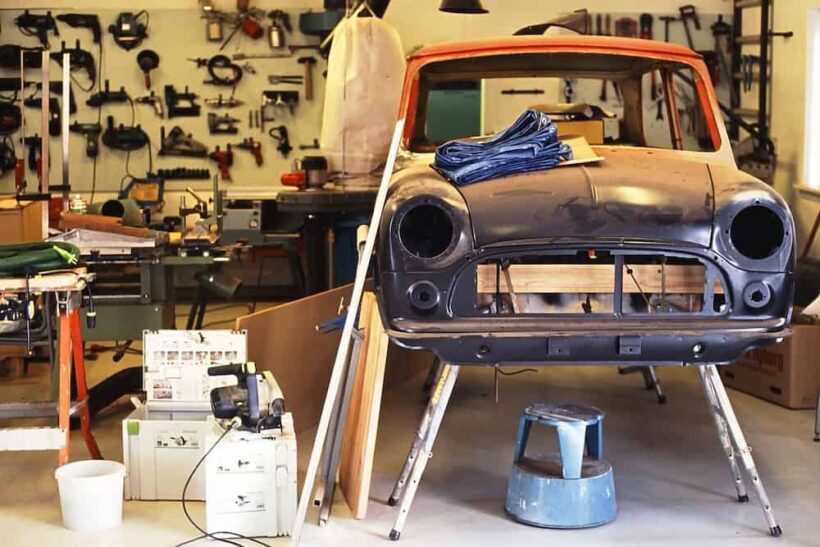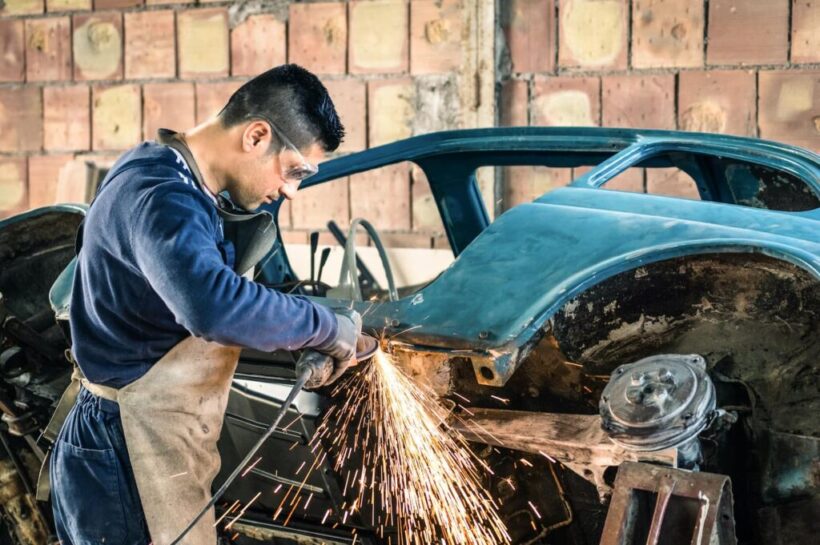The idea of stripping down a car to its frame, repairing it, and building it back together is a thrill every car enthusiast has toyed with at least once in their life. Unfortunately for some, the real task of car restoration is overwhelming, considering the effort, time, money, and emotions that go into it. All the more when the car is vintage.
As challenging as restoration might seem, it’s also rewarding. Whether you plan on driving or adding it to your collection, there’s nothing more satisfying than restoring a car from another era to its former glory. Unless you’re knowledgeable about car repairs and plan on doing the project yourself, you need the help of car restoration specialists. They can share their expertise so you can achieve your goals faster. Visit studroadpanels.com.au or other professionals to get more enlightened about car restorations.
Before splashing out money on a vintage car, here are four things you should consider:
1. Time And Money

The condition of the vintage car determines the project’s scope in terms of time and money. For instance, a vehicle that you disassemble entirely will require more time and a higher budget than one that will need fewer repairs. Therefore, you should have realistic expectations.
Restoring a vintage car is time-consuming and requires commitment. It takes an average of 1,000 hours to restore one. This time can spread over months or years, depending on your schedule. Rushing the work might produce poor results while stretching it too long might kill your enthusiasm.
Once you decide to work on a vintage car, evaluate its condition first and factor in what needs restoring. This gives you realistic expectations and a rough estimate of the time and money you require to rebuild your vintage car.
2. Type Of Restoration

Vintage cars are rated on a 100-point system. A car with a 100 rating is one that an enthusiast or a professional restored to perfect restoration. A rating of 20 and below means the vehicle is un-restorable. Nonetheless, the question is, will you sell it after restoration? Make it your daily driver or drive it once in a while? Add it to your collection? Your answer will determine the level of restoration your vehicle will undergo.
Here are the levels of vintage car restoration you must know:
- Driving Condition: The goal of this restoration is to get the vintage car back to its driving condition. Emphasis is put on its functionality rather than its authenticity. Generally, modern parts and features are used to give the driver a comfortable driving experience. It’s the least time-consuming and expensive restoration level.
- Street Show Condition: Besides getting it back on the road, a street show–restored vintage car should have fewer cosmetic issues and drive well. The vehicle should attain 80–89 points after rating by a professional judge. This level of restoration requires higher-quality car parts, attention to detail, and professional repairs, at least on the exterior.
- Show Car Restoration: Restorers give more attention to show car–level vintage cars to attain show-car status with a ranking of 90–94 points. Most vintage show cars are usually disassembled, their body panels reworked, and minor defects removed.
- Concours Condition: This is the highest level of vintage car restorations with the aim of returning the car as close as possible to its original condition. It involves stripping down the vehicle to its frame. Restorers conduct significant research to get the vehicle’s original parts and components. The end result is a vintage car without defects. The project is usually a huge, expensive, and time-consuming undertaking. They professionally rate these cars 95 and above.
If you plan on putting your vintage car on the market, auctioneers or buyers usually rate your vehicle according to the extent of its restoration.
3. Finding The Right Car
You can think of getting the right vintage car like getting the right partner. You dedicate much time to it and meditate about it. Sometimes it frustrates you to the point of wanting to walk away, but other times, it inspires you and teaches you much about yourself. The passion you feel toward the car you get will keep you committed to its restoration. However, you must balance between getting a vehicle you can restore to the highest level and keeping the costs manageable.
Whatever your choice, ensure you see the car physically before buying it. In any event, take a professional mechanic who knows their way around vintage cars along to provide expert opinion. The main damage that most vintage cars suffer from is rust. Ideally, it’s best to go for a vehicle with very little interior, exterior, and structural damage. The restoration level you plan to undertake determines if you need original spare parts or if the project should be okay with standard ones.
4. Space, Tools, And Equipment

Unless you outsource your restoration project to car specialists in their garage, bringing back a vintage car to life requires dedicated space. If you don’t have enough space to hold parts of a dismantled car, you might need to rent out space for the project. Besides the physical space, you’ll also require the right vehicle repair tools and equipment for the project to succeed.
Some tools and equipment you can acquire quickly and are easy to use, but you might need to source tools you need for a specific job. Additionally, you might have to get certifications to operate the specialized equipment or hire experts to help you. Renting specialized tools is more cost-effective than buying them, especially if you’re working on a tight budget.
Conclusion
When shopping for a car, don’t settle on a model impulsively. Do extensive research to know which models are more valuable after restoration. Those with appreciation potential may cost more upfront but remember that the cost is just a portion of the entire project.
If possible, choose a car that starts, to reduce time-consuming and mechanical repairs. Even if you’re aiming to restore your vehicle to its original state, don’t skimp on safety upgrades. It’s possible to do so without compromising its integrity. Lastly, go for a car whose spare parts are readily available, or else your project will be dead on arrival.

